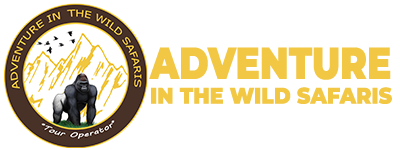Salonga National Park
The largest tropical rainforest protected area in Africa is Salonga National Park, which is situated in the central basin south of the Congo River. The 3600 square kilometer Salonga national park, which is under the control of the Institut congolais pour la conservation de la nature (ICCN), traverses the provinces of Mai Ndombe, Equateur, Kasai, and Sankuru. The Congo River, as well as other minor rivers like the Lokoro River, which runs through the park’s central and northern region, and the Lula River in the south, make Salonga National Park, which is located there, accessible by boat.
The Salonga National Park is one of Africa’s largest and most well-known parks, sheltering a variety of wildlife. The park is divided into sections that follow parallel river terraces with a southeast to northwest trend and high plateaus covered in dry forests, each of which is home to a different flora variety. These are the northern block and the southern block. The northern block is between the Lomela and Loile rivers. It extends to higher ground in the east with deeper valleys and rivers that flow below cliffs from meandering valleys in the west with marshy sides. The lower western valleys of the park’s southern block, which runs between the Luilaka and Lula rivers, are made up of clayey sands
A natural treasure, Salonga National Park is located halfway between Kinshasa, the country’s capital, and Kisangani. It is home to 40% of the world’s bonobos and one of the last untouched tropical forests. In the north of the park, there are numerous major vegetation types of tropical rain forest, and semi-deciduous forest can be found near the rivers. Staudtia stipitata, Polyalthia suavaeolens, Scorodophloeus zenkeri, Anonidium mannii, and Parinari Glaberrium are some of the plant species that make up the park’s semi-deciduous forest. The woodland species Oubanguia Africana, Scytopetalum pierrianum, and Guibourtia demeuse are all susceptible to flooding. Entandophragma palustre, Coelocaryon botryoides, Symphonia globulifera, among many others, are species of swamp forests.
A UNESCO world heritage site, Salonga National Park contains Masai rivers, streams, marshes, and distinctive grasslands known as bias. The park is also home to a variety of unusual animals, including 51 mammal species, around 129 fish species, and 223 bird species. The bonobo, a type of pygmy chimpanzee that is endemic to the Democratic Republic of the Congo, is one of the mammals that can be found in the park’s northwestern, northeastern, and southeast borders.
Other mammals include Angolan cusimanse (mongoose), African forest buffalo, leopard, spotted necked otter, forest and savannah elephants, giant ground pangolins, blue duiker, yellow backed duiker, water chevrotain, western bongo, hippopotamus, Okapi, bush back, bongo, long tailed pangolin, and many more. The park is home to numerous different primates, including mangabeys, red-tailed monkeys, Alens Swampy monkeys, mona monkeys, and dwarf bush baby dryad monkeys.
About 153 bird species have been reported in Salonga National Park, including the cattle egret, migrant black stork, and yellow-billed stork. The endangered Congo pea flow, the African grey parrot, the black-bellied bustard, and many others. The Bonobo, which make up 40% of the global population and are genetically identical to humans in 98.7% of cases, are notable for living in Salonga National Park. Compared to chimpanzees, bonobos are a little bit smaller, leaner, and darker.
In order to conserve the biological system and species, Salongo National Park was first formed as Tshuapa National Park in 1956. In 1970, additional park limits were established as a result of presidential decrees issued by President Mobutu Sese Seko. Due to its biological structure and distinctive species, the par was designated a UNESCO world heritage site in 1984. Since 2015, the Congolais pour La Conservation de La Nature and the World Wide Fund for Nature have been in charge of managing and running Salonga National Park.
Salongo National Park is a singular and exciting tourist location with breath-taking safari activities available, including:
Bird Watching: The tropical forests of Salonga National Park are a haven for birds, and while bird watching there, you are sure to see over 300 different species of birds, including the black-bellied bustard, Congo peacock, yellow-billed storks, palm-nut vultures, cattle egrets, grey parrots, and more.
Wildlife viewing: The wildlife viewing safari in Salonga National Park is very captivating as you come across numerous animals like Congo water civets, Allen’s swamp mangabeys, dwarf bush babies, Bonobos, elephants, sitatungas, Potto monkeys, wolf monkeys, duikers, pygmy camp buffaloes, white rhinos, Thollon red Colobus, and Angolan mongooses while you take in the breathtaking scenery of the park.
Walking through the park’s forests and wetlands on a guided nature tour is another thrilling safari activity for seeing wildlife in Salonga National Park. You will see a variety of wildlife while on guided nature walks, including elephants, golden cats, leopards, golden billed mangabeys, dwarf bush babies, and many others.
Fishing: Over 400 different species of fish are caught while fishing in the numerous rivers that cross the Salonga National Park, including the Luilaka, Lula, Lomela, and Loile.
Cultural encounters: The Salonga National Park is bordered by Iyalima people. In these places, you can experience their enlivening, out-of-the-ordinary culture and way of life, which includes sampling their locally produced food, traditional songs, dances, and tales.
Hunting: Going on a hunting expedition is one of the best ways to see Salanga National Park’s natural beauty and wilderness. The hunt is conducted in a group with an armed ranger, and numerous animals are pursued.
The dry months of June through August are the finest times to go on a safari in Salonga National Park for a superb safari experience. Since there is little rainfall during these months, there are no floods in the park and the vegetation cover is not overly dense.
The Salonga National Park may be reached through domestic chartered flight from Monkoto, Anga, and Mundja. It is located 100 kilometers south of Boende between Kisangani and Kinshasa
